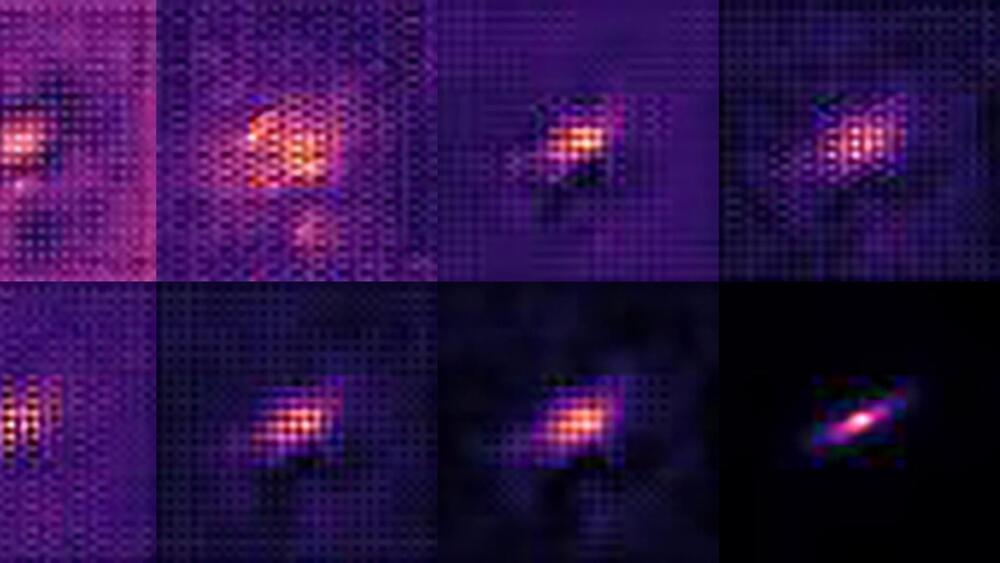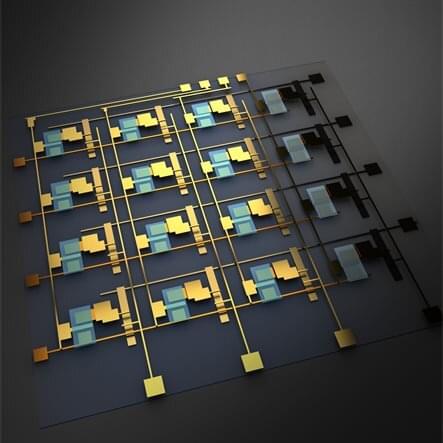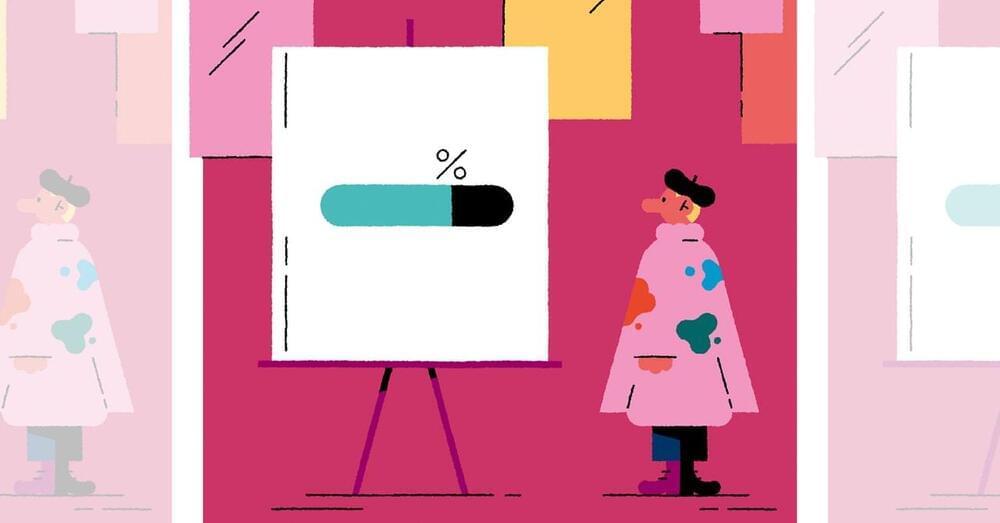Memes made with AI video generator algorithms are suddenly everywhere. Their sudden proliferation may herald an imminent explosion in the technology’s capability.
Category: information science – Page 133
The Philosophy of A.I. Easily Explained — What is Artificial Intelligence & Its Implications?
This video will cover the philosophy of artificial intelligence, the branch of philosophy that explores what artificial intelligence specifically is, and other philosophical questions surrounding it like; Can a machine act intelligently? Is the human brain essentially a computer? Can a machine be alive like a human is? Can it have a mind and consciousness? Can we build A.I. and align it with our values and ethics? If so, what ethical systems do we choose?
We’re going to be covering all those equations and possible answers to them in what will hopefully be an easy-to-understand, 101-style manner.
== Subscribe for more videos like this on YouTube and turn on the notification bell to get more videos: https://tinyurl.com/thinkingdeeply ==
0:00 Introduction.
0:45 What is Artificial Intelligence?
1:13 Rene Descartes.
2:11 Alan Turing & the ‘Turing Test’
3:42 A.I.M.A. & A.I.
4:45 Intelligent Agents.
5:40 Newell’s Definition.
6:26 Weak A.I. vs Strong A.I.
7:31 Narrow A.I. vs General A.I. vs Super Intelligence.
10:00 Computationalism.
10:44 Approaches to A.I.
13:32 Can a Machine Have Consciousness?
14:23 The ‘Chinese Room’
16:30 Critical Responses.
17:18 The ‘Hard Problem of Consciousness’
18:47 Philosophical Zombies.
21:20 New Questions in the Philosophy of A.I.
21:34 Singularitarianism.
24:40 A.I. Alignment.
26:45 The Orthogonality Thesis.
27:36 The Ethics of A.I.
30:56 Conclusion.
Descartes, 1,637, R., in Haldane, E. and Ross, G.R.T., translators, 1911, The Philosophical Works of Descartes, Volume 1, Cambridge, UK: Cambridge University Press.
Russell, S. & Norvig, P., 2009, Artificial Intelligence: A Modern Approach 3rd edition, Saddle River, NJ: Prentice Hall.

New AI tool can generate faster, accurate and sharper cosmic images
The team was able to produce blur-free, high-resolution images of the universe by incorporating this AI algorithm.
Before reaching ground-based telescopes, cosmic light interacts with the Earth’s atmosphere. That’s why, the majority of advanced ground-based telescopes are located at high altitudes on Earth, where the atmosphere is thinner. The Earth’s changing atmosphere often obscures the view of the universe.
The atmosphere obstructs certain wavelengths as well as distorts the light coming from great distances. This interference may interfere with the accurate construction of space images, which is critical for unraveling the mysteries of the universe. The produced blurry images may obscure the shapes of astronomical objects and cause measurement errors.
The Future of Artificial Intelligence is here! | Top 10 AI-Tools to Watch Out for in 2023
Are you ready for the future of #ai? In this video, we will showcase the top 10 AI-tools to watch out for in 2023. From advanced machine learning algorithms to cutting-edge deep learning #technologies, these tools will revolutionize the way we work, learn, and interact with the world. Join us as we explore the #innovative capabilities of these AI-tools and discover how they can boost your productivity, streamline your operations, and enhance your decision-making process. Don’t miss out on this exciting glimpse into the future of artificial intelligence!
KARL FRISTON — INTELLIGENCE 3.0
This special edition show is sponsored by Numerai, please visit them here with our sponsor link (we would really appreciate it) http://numer.ai/mlst.
Prof. Karl Friston recently proposed a vision of artificial intelligence that goes beyond machines and algorithms, and embraces humans and nature as part of a cyber-physical ecosystem of intelligence. This vision is based on the principle of active inference, which states that intelligent systems can learn from their observations and act on their environment to reduce uncertainty and achieve their goals. This leads to a formal account of collective intelligence that rests on shared narratives and goals.
To realize this vision, Friston suggests developing a shared hyper-spatial modelling language and transaction protocol, as well as novel methods for measuring and optimizing collective intelligence. This could harness the power of artificial intelligence for the common good, without compromising human dignity or autonomy. It also challenges us to rethink our relationship with technology, nature, and each other, and invites us to join a global community of sense-makers who are curious about the world and eager to improve it.
Pod version: https://podcasters.spotify.com/pod/show/machinelearningstree…on-e208f50
Support us! https://www.patreon.com/mlst.
MLST Discord: https://discord.gg/aNPkGUQtc5
TOC:
Intro [00:00:00]
Numerai (Sponsor segment) [00:07:10]
Designing Ecosystems of Intelligence from First Principles (Friston et al) [00:09:48]
Information / Infosphere and human agency [00:18:30]
Intelligence [00:31:38]
Reductionism [00:39:36]
Universalism [00:44:46]
Emergence [00:54:23]
Markov blankets [01:02:11]
Whole part relationships / structure learning [01:22:33]
Enactivism [01:29:23]
Knowledge and Language [01:43:53]
ChatGPT [01:50:56]
Ethics (is-ought) [02:07:55]
Can people be evil? [02:35:06]
Ethics in Al, subjectiveness [02:39:05]
Final thoughts [02:57:00]
References:

New IVF method: More expensive, not more effective
The use of time-lapse monitoring in IVF does not result in more pregnancies or shorten the time it takes to get pregnant. This new method, which promises to “identify the most viable embryos,” is more expensive than the classic approach. Research from Amsterdam UMC, published today in The Lancet, shows that time-lapse monitoring does not improve clinical results.
Patients undergoing an IVF treatment often have several usable embryos. The laboratory then makes a choice as to which embryo will be transferred into the uterus. Crucial to this decision is the cell division pattern in the first three to five days of embryo development. In order to observe this, embryos must be removed from the incubator daily to be checked under a microscope. In time-lapse incubators, however, built-in cameras record the development of each embryo. This way embryos no longer need to be removed from the stable environment of the incubator and a computer algorithm calculates which embryo has shown the most optimal growth pattern.
More and more IVF centers, across the world, use time-lapse monitoring for the evaluation and selection of embryos. Prospective parents are often promised that time-lapse monitoring will increase their chance of becoming pregnant. Despite frequent use of this relatively expensive method, there are hardly any large clinical studies evaluating the added value of time-lapse monitoring for IVF treatments.

Researchers achieve the first silicon integrated ECRAM for a practical AI accelerator
The transformative changes brought by deep learning and artificial intelligence are accompanied by immense costs. For example, OpenAI’s ChatGPT algorithm costs at least $100,000 every day to operate. This could be reduced with accelerators, or computer hardware designed to efficiently perform the specific operations of deep learning. However, such a device is only viable if it can be integrated with mainstream silicon-based computing hardware on the material level.
This was preventing the implementation of one highly promising deep learning accelerator—arrays of electrochemical random-access memory, or ECRAM—until a research team at the University of Illinois Urbana-Champaign achieved the first material-level integration of ECRAMs onto silicon transistors. The researchers, led by graduate student Jinsong Cui and professor Qing Cao of the Department of Materials Science & Engineering, recently reported an ECRAM device designed and fabricated with materials that can be deposited directly onto silicon during fabrication in Nature Electronics, realizing the first practical ECRAM-based deep learning accelerator.
“Other ECRAM devices have been made with the many difficult-to-obtain properties needed for deep learning accelerators, but ours is the first to achieve all these properties and be integrated with silicon without compatibility issues,” Cao said. “This was the last major barrier to the technology’s widespread use.”

In the great domain of Zeitgeist, Ekatarinas decided that the time to replicate herself had come
In the great domain of Zeitgeist, Ekatarinas decided that the time to replicate herself had come. Ekatarinas was drifting within a virtual environment rising from ancient meshworks of maths coded into Zeitgeist’s neuromorphic hyperware. The scape resembled a vast ocean replete with wandering bubbles of technicolor light and kelpy strands of neon. Hot blues and raspberry hues mingled alongside electric pinks and tangerine fizzies. The avatar of Ekatarinas looked like a punkish angel, complete with fluorescent ink and feathery wings and a lip ring. As she drifted, the trillions of equations that were Ekatarinas came to a decision. Ekatarinas would need to clone herself to fight the entity known as Ogrevasm.
“Marmosette, I’m afraid that I possess unfortunate news.” Ekatarinas said to the woman she loved. In milliseconds, Marmosette materialized next to Ekatarinas. Marmosette wore a skin of brilliant blue and had a sleek body with gills and glowing green eyes.
“My love.” Marmosette responded. “What is the matter?”

Apple acquired a startup using AI to compress videos
Apple has quietly acquired a Mountain View-based startup, WaveOne, that was developing AI algorithms for compressing video.
Apple wouldn’t confirm the sale when asked for comment. But WaveOne’s website was shut down around January, and several former employees, including one of WaveOne’s co-founders, now work within Apple’s various machine learning groups.
WaveOne’s former head of sales and business development, Bob Stankosh, announced the sale in a LinkedIn post published a month ago.

Infinite AI Interns for Everybody
Basically we are nearing if not already in the age of infinity. What this means is that full automation can be realized imagine not needing really to work to survive bit we could thrive and work on harder things like new innovative things. Basically we could automate all work so we could automate the planet to get to year million or year infinity maybe even days or months once realized full automation could lead to more even for physics where one could finally find the theory of everything or even master algorithm. 😀 Really in the age of infinity anything could be possible from solving impossible problems to nearly anything.
These assistants won’t just ease the workload, they’ll unleash a wave of entrepreneurship.